Korea Wine Festival (대한민국와인축제)
8.9 Km 11406 2023-09-14
117, Yeongdong healing-ro, Yeongdong-gun, Chungcheongbuk-do
+82-43-745-8920
Yeongdong County in Chungcheongbuk-do is the largest grape-producing region in Korea. Yeongdong Wine Festival offers various programs including wine sampling from the products of 40 local wineries.
Nangye Korean Classical Music Museum (난계국악박물관)
9.5 Km 7685 2021-07-22
9, Gugak-ro, Yeongdong-gun, Chungcheongbuk-do
+82-43-740-3886
Nangye Korean Classical Music Museum in Yeongdong, Chungcheongbuk-do was built to preserve and build upon the musical achievements and artistic spirit of Nangye Park Yeon, one of the three master musicians of traditional Korean music during the Joseon dynasty, and to enhance public awareness of traditional Korean music.
The Nangye Korean Classical Instruments Production Village produces high-quality Korean classical instruments in cooperation with Yeongdong-gun and a professional Korean classical instrument manufacturer to foster awareness that Yeongdong is truly home to traditional Korean music.
Regular Performances of Nangye Gugak Troupe (난계국악단 상설공연)
9.8 Km 2523 2020-03-21
33, Gugak-ro 1-gil, Yeongdong-gun, Chungcheongbuk-do
• 1330 Travel Hotline: +82-2-1330 (Korean, English, Japanese, Chinese) • For more info: +82-43-740-3224
To commemorate the soul and spirit of Nangye Park Yeon, one of the three legendary gugak (traditional Korean music) musicians with Wang Sanak and Ureuk in Korea's ancient kingdoms, Yeongdong-gun, the hometown of Nangye, has organized regular performances of Nangye Gugak Troupe sponsored by the Ministry of Culture, Sports and Tourism. Nangye Gukak Troupe, the first county-level public gugak performance team, was established in 1991 to inherit the spirit of Nangye. The troupe started its performance with the opening show of the National Gugak Orchestral Music Festival in 1994 and has met audiences about 100 times every year. Meanwhile, the Nangye Traditional Music Museum and the Nangye Traditional Music Instrument Experience Center were opened in 2000 and 2006 respectively, helping Yeongdong-gun be titled the Mecca of Traditional Korean Music. The regular performances given every Saturday in Yeongdong Gugak Village enhances the status of traditional Korean music and reminds us of its value and importance.
Geumgang Resort (금강유원지)
12.9 Km 7711 2020-02-20
596, Geumgang-ro, Okcheon-gun, Chungcheongbuk-do
+82-43-731-2233
Geumgang Resort has become popular thanks to the construction of the Geumgang Service Area. With scenic mountains and a large beautiful lake, this resort attracts many visitors. By crossing a nearby dam, visitors can get to Usan-ri. Recently, many modern homestay facilities have been built in this area, and it has been transformed into a perfect destination for families and young people alike.
Utilize the many facilities of the Geumgang Service Area while relaxing at Geumgang Resort. Also, Joryeong-ri Local Food Village is located across from the Geumgang Service Area, and offers a variety of local foods.
Yeongdong Bidangang Forest Village (영동 비단강숲마을)
17.5 Km 24063 2019-09-17
20-27, Sudu 1-gil, Yangsan-myeon, Yeongdong-gun, Chungcheongbuk-do
+82-43-745-5432
Yeongdong Bidangang Forest Village is a pure farming village which was at the historical border between the Silla and Baekje kingdoms. Also located nearby is Yeongguksa Temple, where King Gongmin escaped from the Red Turban troops during the Goryeo period.
Created by the Geumgang River that flows like silk around Bonghwasan Mountain, the village is surrounded by breathtaking scenery, keeping Mother Nature clean so organisms including marsh snails and mandarin fish can live.
In the village, plenty of hands-on activities such as catching snails in the crystalline water like a treasure hunter and riding a tandem
bike are available to make a valuable memory. Not only these activities, visitors can also take a rest within the ambience of Bidangang River and pick sweet potatoes and grapes, giving the pleasure of harvesting. Other programs including making a wooden doorplate, wine foot-bathing, flying a pungdeung (lantern), and herb soap-making are offered.
Domaryeong Pass (도마령)
19.1 Km 30236 2024-02-26
Jodong-ri, Yonghwa-myeon, Yeongdong-gun, Chungcheongbuk-do
Domaryeong Pass is an 800 m-long pass at the foot of Minjujisan Mountain, connecting the Hwanggang-myeon area of Yeongdong-gun with Muju. The name of the pass, "Doma," refers to how a general with a sword (do) had crossed over the pass on a horse (ma) in the past. This curving road is quite famous as a destination for drives. One can get a bird’s-eye view of the pass and the curving road from the Sangyongjeong Pavilion at the top of the pass.
Yeongdong Yeongguksa Temple (영국사 (영동))
19.5 Km 24003 2022-12-27
225-35, Yeonggukdong-gil, Yeongdong-gun, Chungcheongbuk-do
+82-43-743-8843
Yeongguksa Temple is nestled at the foot of Cheontaesan Mountain (714.7 meters), at the boundary between Chungcheongbuk-do and Chungcheongnam-do. Visitors must trek through a valley to reach the temple, passing waterfalls and rocks.
The time of Yeongguksa Temple's construction is not clearly known but it is said to have been built around the late Silla period, during the time of King Seonjong. The temple prospered when the State Preceptor Wongak, who completed the Cheontae, one of Buddhist orders from Daegak Guksa Uicheon, came to the temple in the middle of the Goryeo period. It continued to flourish until the early Joseon era and then took a dive due to the rule of anti-Buddhism. Despite the situation at the time, the temple's reputation as one of the noted temples remained. However, the situation worsened in the early twentith century, to the point of near closure. The temple was reconstructed by Jubongjosa Monk in 1934.
As of now, the temple contains various treasures including the Stele for State Preceptor Wongak, Stupa of Yeongguksa Temple, Three-story Stone Pagoda of Yeongguksa Temple, Three-story Stone Pagoda at Mangtapbong Peak of Yeongguksa Temple. In addition, Bell-shaped Stupa and Round-shaped Stupa, regional tangible cultural assets, are situated in the temple site.
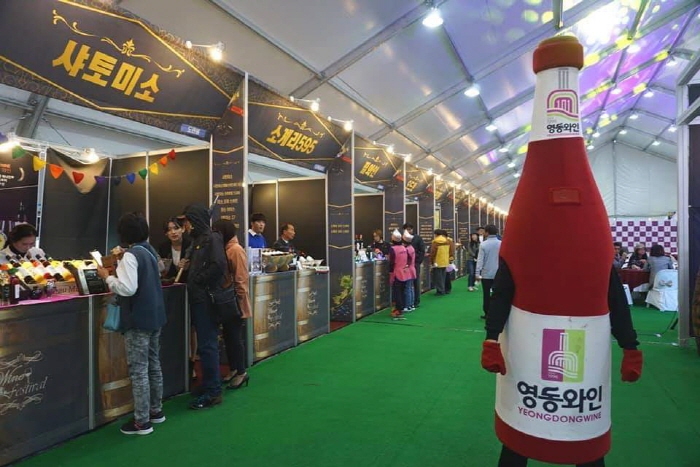
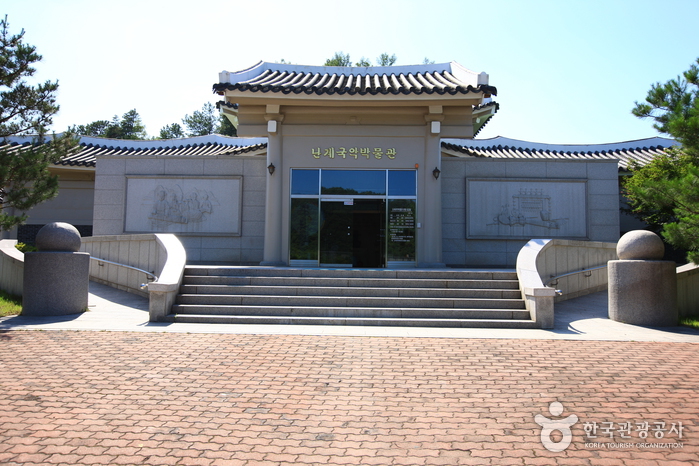

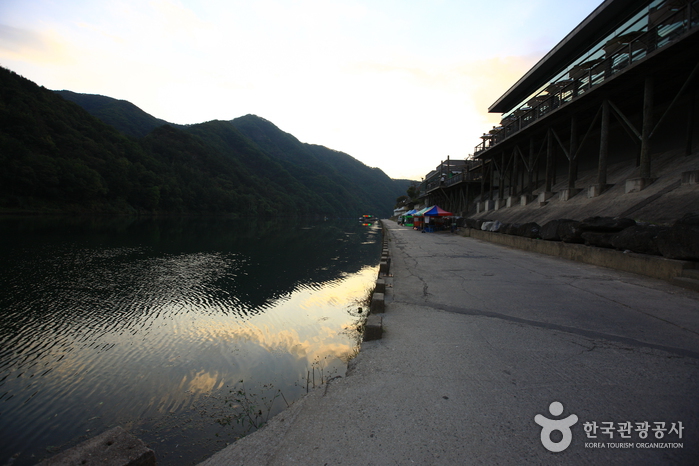
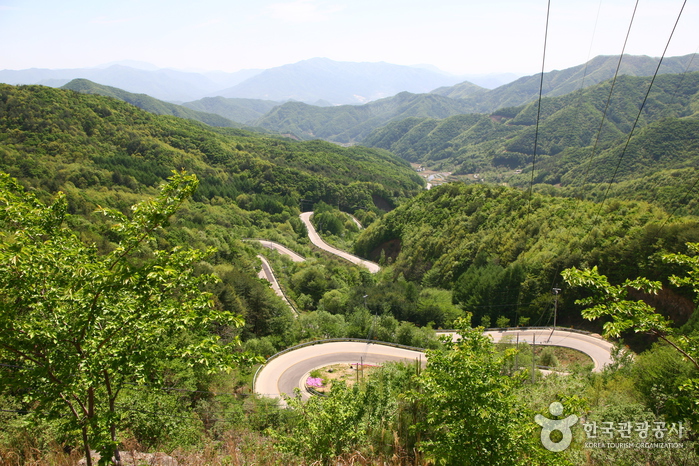
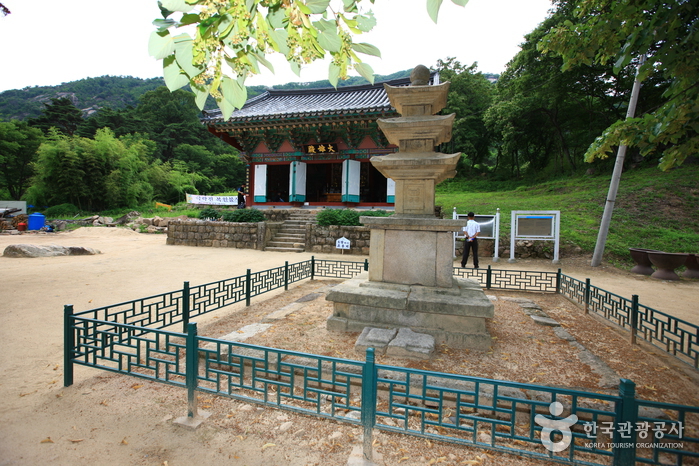
 English
English
 한국어
한국어 日本語
日本語 中文(简体)
中文(简体) Deutsch
Deutsch Français
Français Español
Español Русский
Русский